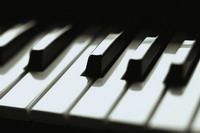Piano Sheets > Erroll Garner Sheet Music > Misty (ver. 8) Piano Sheet
Misty (ver. 8) by Erroll Garner - Piano Sheets and Free Sheet Music

About the Song
Other avaliable versions of this music sheet: Version 2 Version 3 Version 4 Version 5 Version 6 Version 7 Version 8
"Misty" is a jazz standard written in 1954 by the pianist Erroll Garner. Originally composed as an instrumental following the traditional 32-bar format, the tune later had lyrics by Johnny Burke and became the signature song of Johnny Mathis, reaching #12 on the U.S. Pop Singles chart. It has been covered numerous times, perhaps most notably by Ella Fitzgerald, Sarah Vaughan (1959), Frank Sinatra (1961), Lloyd Price (1963), and also by Ray Stevens (1975) as a country song. It was also used as a theme song for NBC's Today Show for most of the 1960s.
Erroll Garner's version of the song was inducted into the Grammy Hall of Fame in 1991, and Johnny Mathis version of the song was inducted in 2002.
The song plays a key role in the plot of the movie Play Misty for Me (1971). Erroll Louis Garner (June 15; 1921 January 2; 1977) was an American jazz pianist and composer whose distinctive and melodic.
Download this sheet!
About the Artist

Random article
Advantages of accessing free sheet music online The internet has pervaded all aspects of our lives and when it comes to learning how to play piano this is no different. There are virtually hundreds of websites, which offer you free sheet music to help you learn how to play the piano. There are several advantages to getting online sheet music versus conventional hard copy versions.
No storage issues
One of the biggest advantages is that online sheet music does not occupy physical space as documents do. This helps you avoid unnecessary clutter
(More...)
